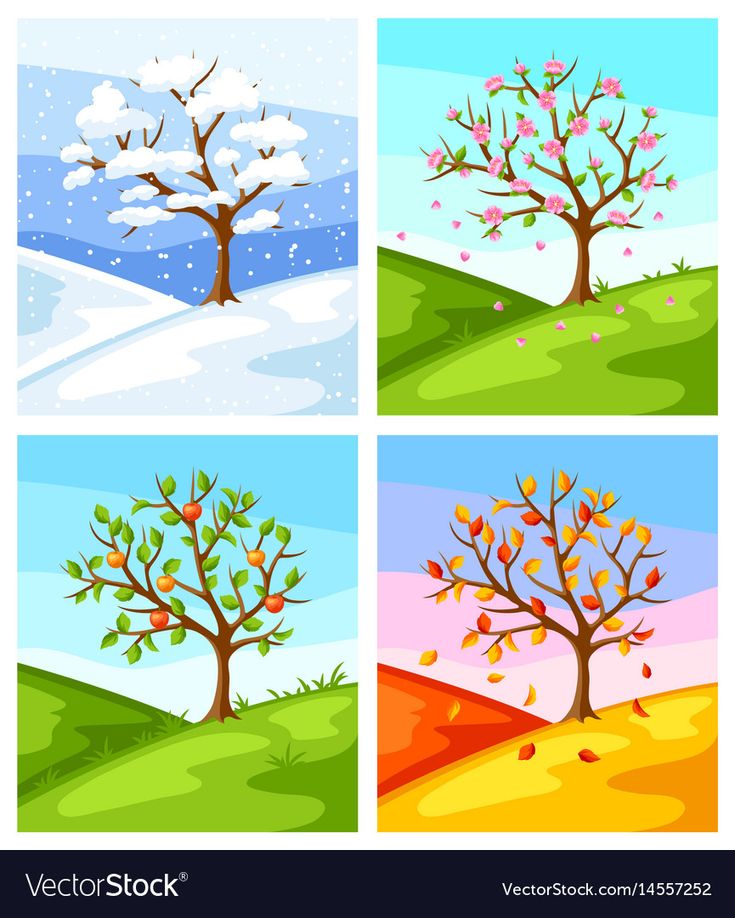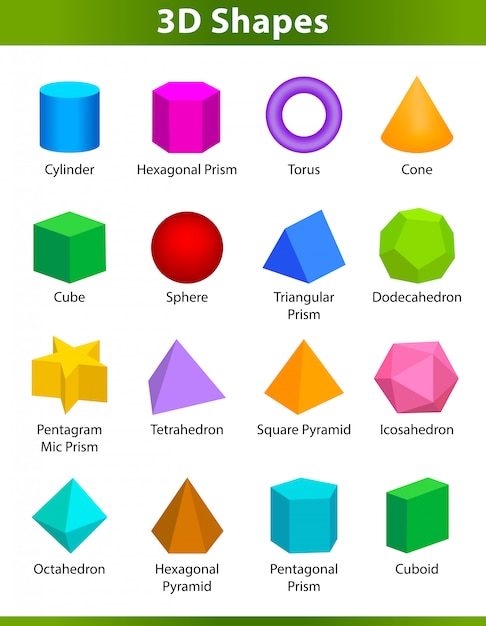Seasons are changing
Shifting Seasons - Conservation in a Changing Climate
The growing seasons are shifting. Spring is arriving earlier, winters are shorter, and the number of freezing days is declining. These changes affect the timing of many life cycle events, such as when flowers bloom or when pollinators emerge. Changes in the timing of these events — spring thaw or songbird migration, for example — can have adverse effects on ecosystems, because different species may respond to different environmental cues, resulting in a misalignment between species that may rely on one another.
How are Seasons Shifting?
Shifting seasons are directly linked to warmer global temperatures. A slight change in temperature is enough to push the spring thaw earlier, and delay the first frost until later in the fall. These environmental changes cause many trees and spring wildflowers to bloom earlier than typical. As a result, winters are shorter, spring is earlier, summers are longer and fall arrives later.
The US EPA uses leaf and bloom dates reflecting national phenology trends to indicate climate change. Scientists have high confidence that the earlier arrival of spring events is linked to recent warming trends in global climate. Disruptions in the timing of these events can have a variety of impacts on ecosystems and human society. For example, an earlier spring might lead to longer growing seasons, more abundant invasive species and pests, and earlier and longer allergy seasons. Unusually warm weather in late winter can create a “false spring” that triggers the new growth of plants to begin too early, leaving them vulnerable to any subsequent frosts – trends that have been increasingly observed throughout the United States.
Implications for Land Trusts
The consequences of shifting seasons include:
- Potential misalignment between lifecycle events of species that rely on one another.
- Greater risk of frost damage. The earlier arrival of warm temperatures may cause many trees and flowers to blossom earlier, however, the risk of frost lingers.
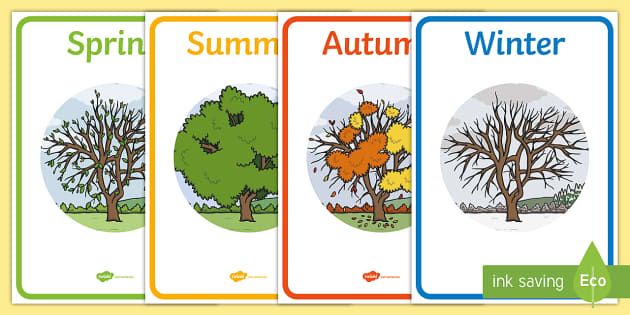 Since some plants are highly vulnerable to frost damage, this can significantly impact the fruit, nut, or seed production of frost-affected plants.
Since some plants are highly vulnerable to frost damage, this can significantly impact the fruit, nut, or seed production of frost-affected plants. - Increased risk of drought, due to the earlier timing of snow-melt and the longer duration of summer.
- Planting zones are shifting further north.
- Pests and diseases may have a greater impact, because they will begin feeding and breeding earlier in the season. Some pest species will also increase in numbers due to milder winters, which allow more individuals to survive until spring.
Shifting seasons are also a trigger for other climate change impacts, such as:
- earlier, more extensive floods
- migrating species
These changes can have profound impacts on species and ecosystems, as well as the human communities that depend on these systems for their ecosystem services.
Tips for Planning: What Land Trusts Are Doing
Cooperatively Working Towards Conservation Goals.
Land trusts are responding to shifting seasons in various ways. Some groups are beginning to include more plant diversity in restoration projects in order to provide native fauna with other food sources and habitats as the timing of seasons change. In addition to employing strategic conservation planning to reduce risks and enhance resilience, some land trusts are also supporting efforts to mitigate greenhouse gas emissions to reduce the extent of future climate change.
Land trusts must determine the right planning approach for their organization, however, more and more, conservation organizations are working with their communities to identify opportunities to reduce vulnerabilities and prepare for changing temperatures. Agencies are making similar strides to implement projects that reduce risks and plan for resilience by incorporating adaptation, mitigation, and engagement into their strategic goals and objectives. For example, the U.S. Fish and Wildlife Service’s Strategic Plan for Responding to Accelerating Climate Change
identifies seven planning and development goals to support sustainable landscapes. Conservation groups are increasingly partnering with agencies as well as other nonprofits and for-profit organizations to respond to this global challenge at local levels.
Conservation groups are increasingly partnering with agencies as well as other nonprofits and for-profit organizations to respond to this global challenge at local levels.
Resilience describes the ability of a system to persist through extreme change. By working to identify and reduce potential threats land managers can build resilience and achieve multiple management objectives. Assessing vulnerabilities is a critical step in the strategic conservation planning process that helps land trusts identify key threats to resources. Adaptive management planning enables conservation practitioners to implement interventions to reduce vulnerabilities and to monitor and revise strategies as new information becomes available. There is no one-size-fits-all solution to addressing management challenges associated with warming average temperatures, however, planning that acknowledges vulnerabilities can help land trusts better achieve their conservation objectives.
Learn More
- Climate Change: Shifts in Season, Nature
- Climate Change Indicators: Leaf and Bloom Dates, EPA
- Phenology as a National Indicator, National Phenology Network
Changing seasons | National Oceanic and Atmospheric Administration
Focus areas:
Education
Topics:
climate outlooks
seasons
education
In many parts of the United States, you might change your wardrobe with the seasons, grabbing a heavy coat in winter, while wearing only a light t-shirt in summer. Although ecosystems, plants, and animals cannot adjust their attire quite so easily, they have evolved to make changes that help them survive seasonal conditions caused by the rotation of the Earth around the sun.
>
Do you know the difference between meteorological and astronomical seasons? Astronomical seasons are based on the position of the Earth in relation to the sun, whereas meteorological seasons are based on the annual temperature cycle. The Earth’s annual trip around the sun forms the basis for the astronomical calendar in which seasons are defined by two solstices and two equinoxes. The Earth is tilted 23.5 degrees on its axis of rotation, and how the North Pole is oriented toward or away from the sun determines two of these astronomical dates. At the winter solstice, the North Pole is tilted away from the sun, whereas at the summer solstice, the North Pole is tilted toward the sun. The equinoxes occur halfway between these events when the sun’s path is aligned with the Earth’s equator. The dates shown describe the astronomical seasons for the Northern Hemisphere in 2022; the exact dates vary slightly from year to year. Meteorological seasons are broken down into groupings of three months in our civil calendar based on the annual temperature cycle. We generally think of winter as the coldest time of the year and summer as the warmest time of the year, with spring and fall being the transition seasons. In the Southern Hemisphere, the seasons are reversed where summer occurs when the South Pole is oriented towards the sun, and winter happens when the South Pole faces away.
The Earth’s annual trip around the sun forms the basis for the astronomical calendar in which seasons are defined by two solstices and two equinoxes. The Earth is tilted 23.5 degrees on its axis of rotation, and how the North Pole is oriented toward or away from the sun determines two of these astronomical dates. At the winter solstice, the North Pole is tilted away from the sun, whereas at the summer solstice, the North Pole is tilted toward the sun. The equinoxes occur halfway between these events when the sun’s path is aligned with the Earth’s equator. The dates shown describe the astronomical seasons for the Northern Hemisphere in 2022; the exact dates vary slightly from year to year. Meteorological seasons are broken down into groupings of three months in our civil calendar based on the annual temperature cycle. We generally think of winter as the coldest time of the year and summer as the warmest time of the year, with spring and fall being the transition seasons. In the Southern Hemisphere, the seasons are reversed where summer occurs when the South Pole is oriented towards the sun, and winter happens when the South Pole faces away.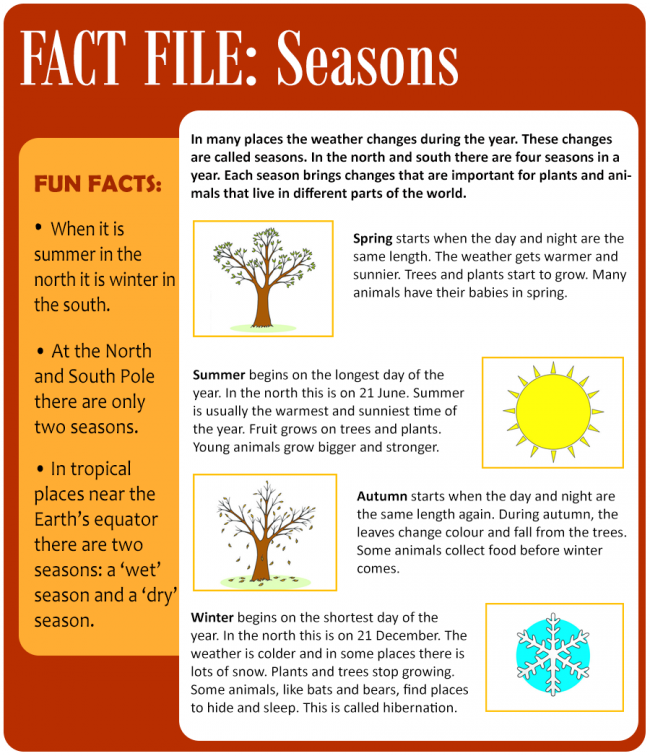 (Image credit: NOAA Office of Education/Kaleigh Ballantine)
(Image credit: NOAA Office of Education/Kaleigh Ballantine)
Download Image
Click to see this graphic for the Southern Hemisphere
Do you know the difference between meteorological and astronomical seasons? Astronomical seasons are based on the position of the Earth in relation to the sun, whereas meteorological seasons are based on the annual temperature cycle. The Earth’s annual trip around the sun forms the basis for the astronomical calendar in which seasons are defined by two solstices and two equinoxes. The Earth is tilted 23.5 degrees on its axis of rotation, and how the North Pole is oriented toward or away from the sun determines two of these astronomical dates. At the winter solstice in the Southern Hemisphere, the South Pole is tilted away from the sun, whereas at the summer solstice, the South Pole is tilted toward the sun. The equinoxes occur halfway between these events when the sun’s path is aligned with the Earth’s equator. The dates shown describe the astronomical seasons for the Southern Hemisphere in 2022; the exact dates vary slightly from year to year. Meteorological seasons are broken down into groupings of three months in our civil calendar based on the annual temperature cycle. We generally think of winter as the coldest time of the year and summer as the warmest time of the year, with spring and fall being the transition seasons. (NOAA Office of Education/Kaleigh Ballantine)
The dates shown describe the astronomical seasons for the Southern Hemisphere in 2022; the exact dates vary slightly from year to year. Meteorological seasons are broken down into groupings of three months in our civil calendar based on the annual temperature cycle. We generally think of winter as the coldest time of the year and summer as the warmest time of the year, with spring and fall being the transition seasons. (NOAA Office of Education/Kaleigh Ballantine)
Download Image
Why do we have seasons?
The Earth is tilted 23.5 degrees on its axis, which affects the distribution of the sun’s energy across the surface of the planet. As the Earth orbits the sun every 365 ¼ days, the axis is always pointing in the same direction into space, with the North Pole toward Polaris, the North Star. Around June 22, the Northern Hemisphere is angled towards the sun, and receives the most direct radiation and the most energy. This is the start of astronomical summer in the Northern Hemisphere and winter in the Southern Hemisphere.
Six months later, in December, the Earth has completed half a revolution around the sun. The Northern Hemisphere is now angled away from the sun and receives less energy than the Southern Hemisphere; this is the beginning of winter in the Northern Hemisphere and summer in the Southern Hemisphere. From north to south, the results of the distribution of solar energy can be seen in changing vegetation, animal behaviors, temperatures, and day length.
Meteorological versus astronomical seasons
You may have noticed that meteorologists and climatologists define seasons differently from “regular” or astronomical spring, summer, fall, and winter.
Astronomical and meteorological seasons
Meteorologists and climatologists use a slightly different time scale for meteorological seasons than for astronomical winter, spring, summer, and fall. Why do meteorological and astronomical seasons begin and end on different dates? In short, it’s because the astronomical seasons are based on the position of the Earth in relation to the sun, whereas the meteorological seasons are based on the annual temperature cycle and help scientists track climate and weather trends.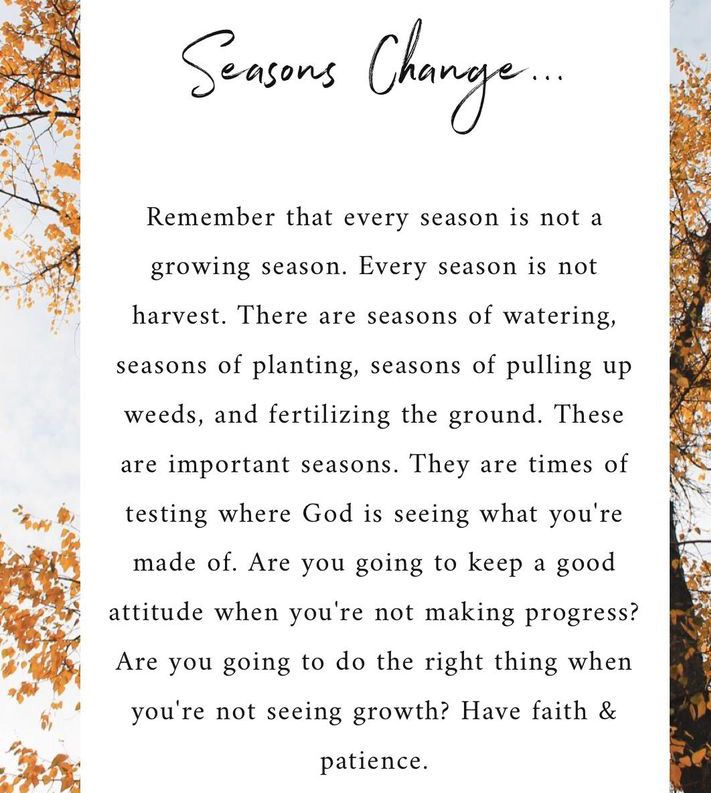
Spring into science
Celebrate the season of spring with NOAA! From new graphics to educational resources, spring into science with us and check out our content.
Seasonal effects
Seasonal changes in precipitation and temperature affect soil moisture, evaporation rates, river flows, lake levels, and snow cover. Leaves fall and plants wither as cold and dry seasons approach.
These changes in vegetation affect the type and amount of food available for humans and other organisms. Animals in temperate and polar regions must find alternate food sources, move to warmer locations, or hibernate.
Beyond the big four
Though in the United States, we often think of the seasons as winter, spring, summer, and fall, but there are many different ways seasons change throughout the world, and even within the United States. Can you think of other annual climate events or ways to define seasons?
Groundhog Day forecasts and climate history
Even though he’s been forecasting since 1887, Punxsutawney Phil’s track record for the entire country isn’t perfect. To determine just how accurate he is, we’ve compared U.S. national temperatures with Phil’s forecasts. On average, Phil has gotten it right 40% of the time over the past 10 years.
To determine just how accurate he is, we’ve compared U.S. national temperatures with Phil’s forecasts. On average, Phil has gotten it right 40% of the time over the past 10 years.
EDUCATION CONNECTION
What are some ways that animals adapt to seasonal changes in your region? How does this compare to other areas? How do people adjust to the seasonal changes in their region? How do the seasons impact the use of energy in your community? The resources in this collection help educators encourage their students connect their own observations of the seasons to concepts in Earth science and biology.
Astronomical seasons
The four astronomical seasons that make up the year: spring, summer, autumn and winter begin when the center of the Sun passes one of the points on the ecliptic: the spring and autumn equinoxes, winter and summer solstices.
The main reason for the change of seasons is the tilt of the axis of our planet in relation to the plane of the ecliptic, that is, the plane of rotation of the Earth around the Sun.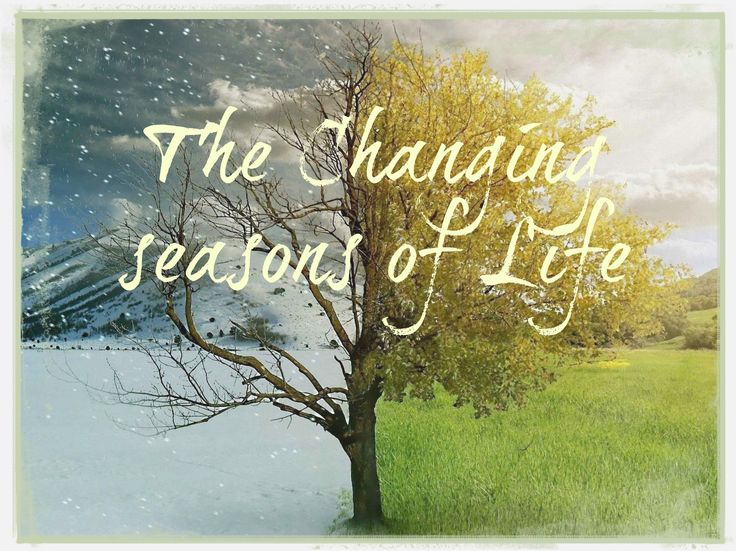 The Earth's axis is tilted from the plane of the ecliptic by 23.44 degrees. If this angle were equal to zero, the seasons would never change on the planet, the length of day and night would be the same, and the Sun would rise above the horizon to the same height throughout the year.
The Earth's axis is tilted from the plane of the ecliptic by 23.44 degrees. If this angle were equal to zero, the seasons would never change on the planet, the length of day and night would be the same, and the Sun would rise above the horizon to the same height throughout the year.
The change of seasons is not only on Earth. Consider the planets of the solar system.
The nearest planets to the Sun, Mercury and Venus, are not suitable examples, since these planets have almost no inclination of the axis of rotation to the ecliptic. Mercury is 0.01 degrees, and Venus is 177 degrees (it is upside down), which can be equated to 3 degrees.
Mars is similar to our planet in many ways. The inclination of the axis of rotation of Mars relative to the plane of its orbit is 25.2 degrees, which is only slightly more than the earth. Seasonality is similar to Earth, but a little more pronounced. When observed at different times of the year, you can see how the Martian “caps” at the poles change, melting occurs.
Jupiter's axis of rotation is tilted only 3 degrees with respect to the plane of the orbit. On the gas giant, the climate is not seasonal and is constant throughout the year.
The tilt of Saturn's axis of rotation is 29 degrees, so the change of seasons on this planet is characterized by more pronounced changes in the amount of sunlight than on Earth, and, consequently, temperature. All four seasons on Saturn last approximately 7 years. Since the entire year of the ringed planet lasts 29earth years. Depending on the time of year, Saturn can change its color. In the year when the automatic interplanetary station "Cassini" first approached the planet, it was winter in the northern hemisphere and this part of Saturn had a blue tint. Now it is summer in the northern hemisphere. This phenomenon occurs due to the intensity of ultraviolet radiation, in winter it decreases, in summer it rises. Well, the most noticeable fact of the change of seasons on Saturn is, of course, its rings. It is they who, for an observer from Earth, will quickly answer the question: “What season is it now on Saturn?” The inclination varies depending on the time of year, since the rings lie in the plane of the planet's equator, which means they have an inclination to the ecliptic equal to 29degrees. When it is summer in the northern hemisphere, the planet turns the northern hemisphere and its rings towards the Sun, and therefore towards the Earth, when it is winter, we see the southern hemisphere. During spring and autumn, the rings become so narrow for the observer that it is difficult to see them. At the equinoxes, Saturn turns into a planet without rings. They disappear.
It is they who, for an observer from Earth, will quickly answer the question: “What season is it now on Saturn?” The inclination varies depending on the time of year, since the rings lie in the plane of the planet's equator, which means they have an inclination to the ecliptic equal to 29degrees. When it is summer in the northern hemisphere, the planet turns the northern hemisphere and its rings towards the Sun, and therefore towards the Earth, when it is winter, we see the southern hemisphere. During spring and autumn, the rings become so narrow for the observer that it is difficult to see them. At the equinoxes, Saturn turns into a planet without rings. They disappear.
The angle of inclination of the axis of rotation of Uranus is 97.86 degrees - it lies on its side, so the planet has a specific change of seasons, not similar to our planet.
On Neptune, the axis of rotation is deviated by 30 degrees, so the change of seasons here is similar to Earth, but the distance of the planet to the Sun makes its own adjustments. A year on Neptune is almost 165 Earth years, and each season lasts 41 years. Summer began in 2005 in the southern hemisphere and will last until 2046.
A year on Neptune is almost 165 Earth years, and each season lasts 41 years. Summer began in 2005 in the southern hemisphere and will last until 2046.
Does the sun always rise in the same place? No. With the change of seasons, the direction to the point of sunrise also changes. On the winter solstice, the sunrise and sunset points are closest to the south direction, and on the summer solstice they are closest to the north.
Days of equinoxes and solstices
Astronomical spring has arrived on March 20, 2020 at 10:49 local time. At this moment, the center of the solar disk will cross the celestial equator and move from the southern celestial hemisphere to the northern one. The height of the Sun on the celestial sphere and, accordingly, the daylight hours will increase until the onset of astronomical summer. This day is called the spring equinox. The fact that the equinox came so early is not surprising - it was a leap year.
June 21, 2020 at 4 hours 44 minutes - astronomical summer. The sun, moving along its path, will move as far as possible from the celestial equator and reach the northernmost point. This day is called the solstice.
The sun, moving along its path, will move as far as possible from the celestial equator and reach the northernmost point. This day is called the solstice.
September 22, 2020 at 20:31 - astronomical autumn. The sun on this day, moving along its path in the celestial sphere, crosses the equator and passes from the northern hemisphere to the southern. This day is called the autumnal equinox: day equals night. After that, the night in the northern hemisphere of the Earth becomes longer than the day, and in the southern hemisphere of the Earth the nights become shorter. This astronomical season will continue until December 21st.
The days around the autumnal equinox are favorable for astronomers and astronomers. The long night and relatively warm weather make it possible to carry out astronomical observations comfortably from evening to morning, about 12 o'clock.
During the equinoxes, the terminator on Earth - the line separating the day and night sides of the planet - is vertical and connects the north and south poles. This can be seen in the photographs of our planet, which are made by artificial satellites.
This can be seen in the photographs of our planet, which are made by artificial satellites.
December 21, 2020 at 17 hours 2 minutes - winter solstice. The sun, moving along its path, will move as far as possible from the celestial equator and reach the southernmost point. The northern hemisphere has the shortest day, while the southern hemisphere has the longest. This is the most favorable period for observing various celestial objects in the night sky, but winter cold and frequent inclement weather (in central Russia) do not allow full-fledged observations.
The material was prepared by Victoria Damm, UC Planetarium
Sources: astronomical calendar for the 2019/2020 academic year. Issue 70;
Stellarium program.
Why the seasons change | First day of summer | When spring begins
If you have ever wondered why the seasons change on Earth, our article will be useful to you. We will talk about what approaches exist to determine the seasons, and also explain why the seasons succeed each other.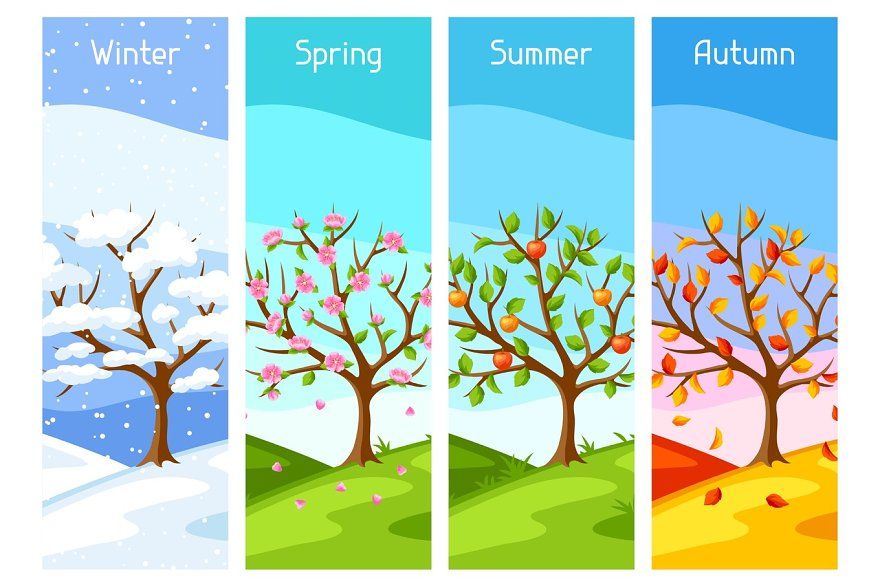
Contents
- How many seasons are there in a year?
- When are the seasons?
- Why does the seasons change on Earth?
- How do the seasons differ in different hemispheres?
- Are there seasons on other planets?
How many seasons are there in a year?
Season or season is a period of the year characterized by certain weather conditions, average daily temperature and length of daylight hours. The number of seasons in a year depends on your geographical location and the cultural characteristics of your region. In temperate and circumpolar regions, 9 are usually distinguished0066 four seasons : spring, summer, autumn and winter.
In some South Asian countries, the year is divided into six seasons instead of four. For example, the Indian calendar has the following seasons: spring, summer, rainy season, autumn, early winter and late winter. In many tropical regions, there are only two seasons : the rainy season and the dry season.
When are the seasons?
There are two main approaches to determining the time limits of the seasons: meteorological and astronomical.
According to the meteorological approach, each season consists of three months and starts on the first day of the first month. Thus, in the Northern Hemisphere, meteorological spring begins on the first of March, summer on the first of June, autumn on the first of September, and winter on the first of December.
According to the astronomical approach, each season begins either on the day of the solstice (when the Sun reaches its northernmost or southernmost point in the sky) or on the day of the equinox (when the Sun crosses the celestial equator). In the Northern Hemisphere, the beginning of astronomical spring is counted from the March equinox, the beginning of summer - from the June solstice, the beginning of autumn - from the September equinox, and the beginning of winter - from the December solstice.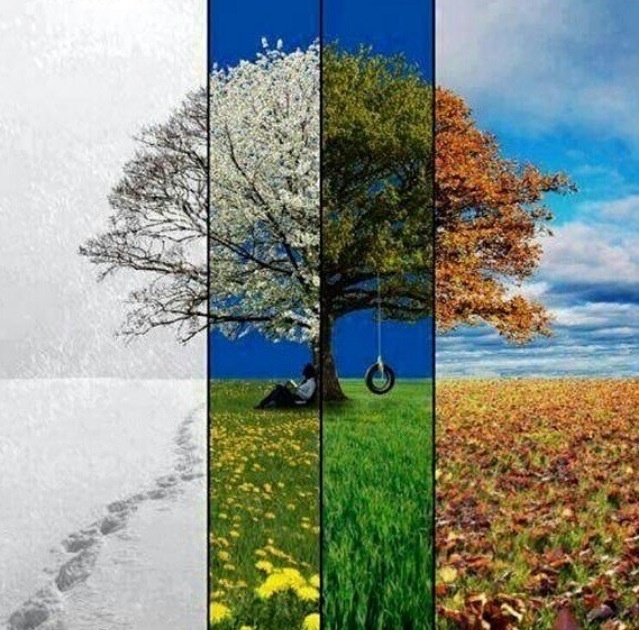 Due to leap years, the dates of the equinoxes and solstices may differ by one or two days each year.
Due to leap years, the dates of the equinoxes and solstices may differ by one or two days each year.
Why does the seasons change on Earth?
Many people think that the seasons change each other because of the ellipticity of the orbit of our planet: when the Earth approaches the Sun, it becomes warmer, and when it moves away, it becomes colder. However, the Earth's orbit is almost circular and does not significantly affect the weather and temperature conditions.
The main reason for the change of seasons is the tilt of the earth's axis . The axis of rotation of our planet is tilted at an angle of about 23.5 degrees with respect to the orbital plane. Most likely, the axis of rotation tilted after the collision of the Earth with another planet about the size of Mars.
Although the tilt of the axis of rotation remains unchanged, the orientation of the Earth relative to the Sun is constantly changing as the Earth revolves around the star.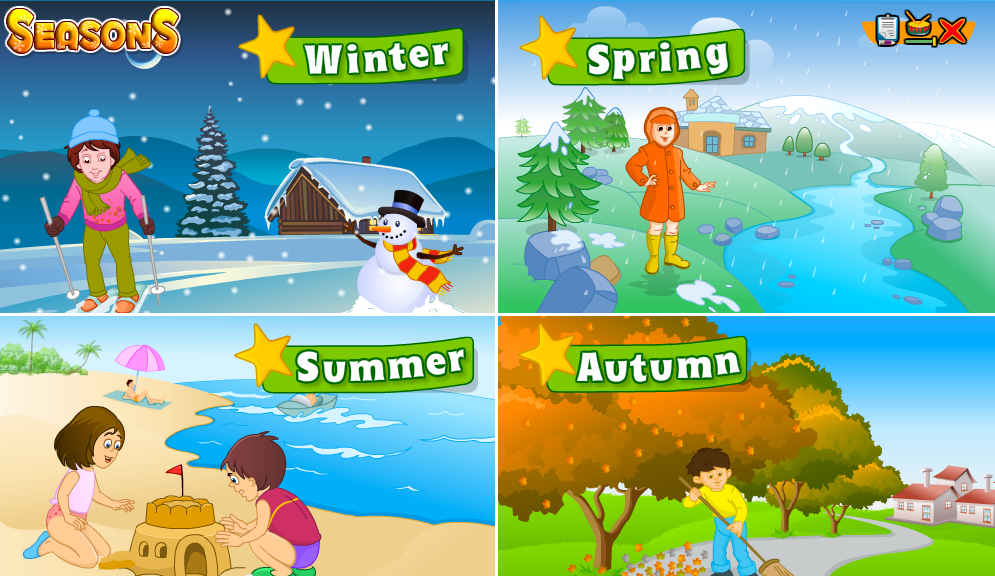 When one of the hemispheres of the Earth is turned towards the Sun, spring and summer come in this hemisphere; the other hemisphere at that moment receives less sunlight, and autumn and winter come there.
When one of the hemispheres of the Earth is turned towards the Sun, spring and summer come in this hemisphere; the other hemisphere at that moment receives less sunlight, and autumn and winter come there.
How do the seasons differ in different hemispheres?
The seasons in the northern and southern hemispheres are opposite. When it is winter in North America, it is summer in South America; when spring comes to Europe, autumn comes to Australia. As you now know, this is due to the fact that the Northern and Southern Hemispheres face the Sun at different times of the year.
Are there seasons on other planets?
The change of seasons is present on all the planets of the solar system, as their rotation axes are tilted. However, the seasons on other planets are different from those on Earth.
Take, for example, Uranus. This planet is tilted at an angle of almost 98 degrees, so that its axis of rotation is almost parallel to the orbital plane. In addition, Uranus takes 84 Earth years to complete one revolution around the Sun.